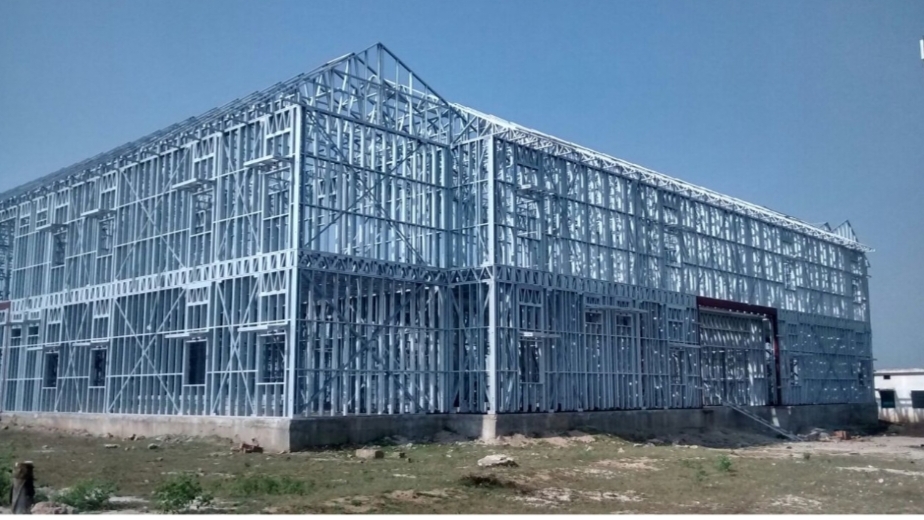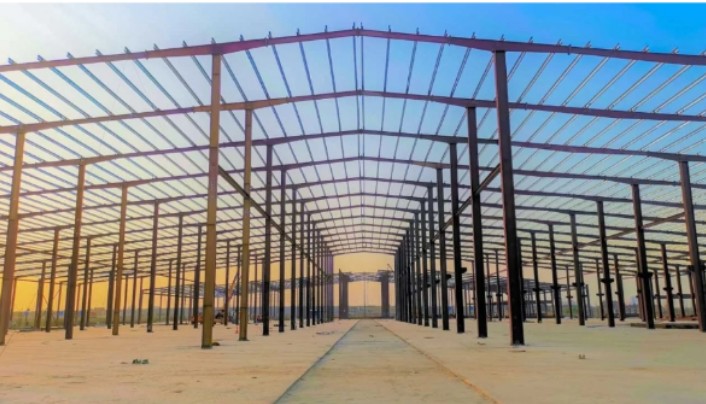The selection of building materials greatly influences construction project budgets, schedules, and sustainability in general, notes McCaw Property Management experts. Prefabricated steel buildings are becoming increasingly well-liked as an effective and contemporary substitute for conventional building techniques.
Prefabricated and pre-engineered metal structures have numerous benefits over alternative building materials. Their flexibility, building speed, low maintenance costs, and insurance coverage are unmatched by anything else. Choosing steel results in cost savings, a sturdy and safe structure, and the most environmentally and energy-friendly material available.
Pre-drilled and pre-cut steel panels are used to easily attach together to form an arch in every prefabricated metal construction. After that, each arch is raised into place and fastened to the foundation. Most of our customers can have their buildings up in a matter of days, depending on the size, with a few extra pairs of hands.
There are several factors that can affect the cost of significant building expenses. While the costs of materials and labour will be divided between the two projects, there is a chance that one design will be more or less expensive than the other due to design differences.
The advantages of selecting prefabricated steel buildings are discussed in this article, along with the reasons why they can be the best option for your upcoming building project.
Cost Efficiency
Another strong argument in favor of prefabricated steel buildings is cost-effectiveness. Lower labor costs and fewer unforeseen charges result from the streamlined manufacturing process and shorter building time. Additionally, energy-efficient prefabricated steel buildings can result in lower heating, cooling, and overall building operation expenses throughout its lifetime. Prefab steel buildings also have predictable costs, which helps prevent budget overruns that are common in traditional construction projects and makes budgeting easier.
Construction Speed
Prefab steel buildings are produced off-site in a controlled manufacturing setting, in contrast to traditional buildings, which necessitate substantial on-site work and coordination between multiple contractors. This method of manufacturing and site preparation simultaneously cuts down on building time significantly. Building components are manufactured in tandem with site preparation, facilitating quick assembly upon arrival. Because of this, it can be finished much faster than traditional construction methods, which makes them a great option for projects.
Durability and Strength
Strong storms, earthquakes, and other calamities that would destroy a wooden construction cannot destroy a steel building. Steel is a great choice for building materials when creating structures that must survive inclement weather, earthquake activity, or other outside dangers. They are designed to adhere to strict safety and structural requirements, they can withstand the test of time without sacrificing performance or safety. Specialized steel coatings can also prevent corrosion on your building, allowing other coverings or paint to be applied to the surface.

Sustainability
The majority of the steel utilized in building projects is recycled steel from other uses. Steel is an extremely recyclable material; in fact, a large amount of steel used in buildings is recycled from other sources. To lower their carbon footprint and operating energy expenses. Their manufacture also assures efficient resource utilization and reduces waste, which helps to make the construction sector as a whole more sustainable.
Adaptability and Expansion
Prefabricated steel buildings are easily adaptable and can be expanded in the future due to their modular design. As needs change, more sections or modules can be added to current structures, giving them scalability and flexibility that traditional buildings can find difficult to provide.
Prefab steel buildings are a great option for companies or organizations that expect growth or changes in their needs for space over time because of its versatility, which means that the building may change with them without requiring significant modifications or disruptions.
Ease of Maintenance
When compared to conventional building materials, maintaining a prefabricated steel building is comparatively simple. Steel’s flat surface also makes it simple to clean and repaint, maintaining the building’s visual appeal and shielding it from weathering and corrosion over time. It is possible to carry out routine maintenance duties like inspections and small repairs quickly, reducing downtime and occupant disturbance.
Can Your Prefabricated Metal Building Have A Basement?
For a variety of reasons, a lot of people looking to build a home or workshop are considering adding space above a basement. A prefabricated metal building’s columns may be fastened to slabs or piers. The same fundamental building principles apply when erecting a prefabricated metal building with a basement, including the foundation, footers, and basement.
The basement must be sturdy enough to support the weight of the metal construction, which will be applied to the outside walls and corners.
When you require a custom metal building, it can be simple to believe that conventional methods are your only option. Numerous businesses are capable of creating custom metal buildings that live up to your expectations. You’ll save time and avoid the hassles associated with the conventional building process.
Final Words
Prefab steel buildings provide many advantages over traditional construction methods, including durability, architectural flexibility, sustainability, and accelerated construction timeframes and cost savings. Whether you’re designing a community project, residential complex, commercial development, or industrial facility, prefabricated steel buildings offer a contemporary option that satisfies the needs of the fast-paced construction industry today. You can guarantee a prosperous and sustainable construction project that offers long-term value and performance by embracing the advantages of steel.





